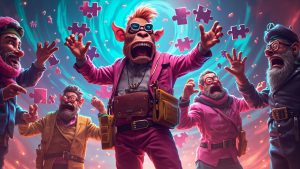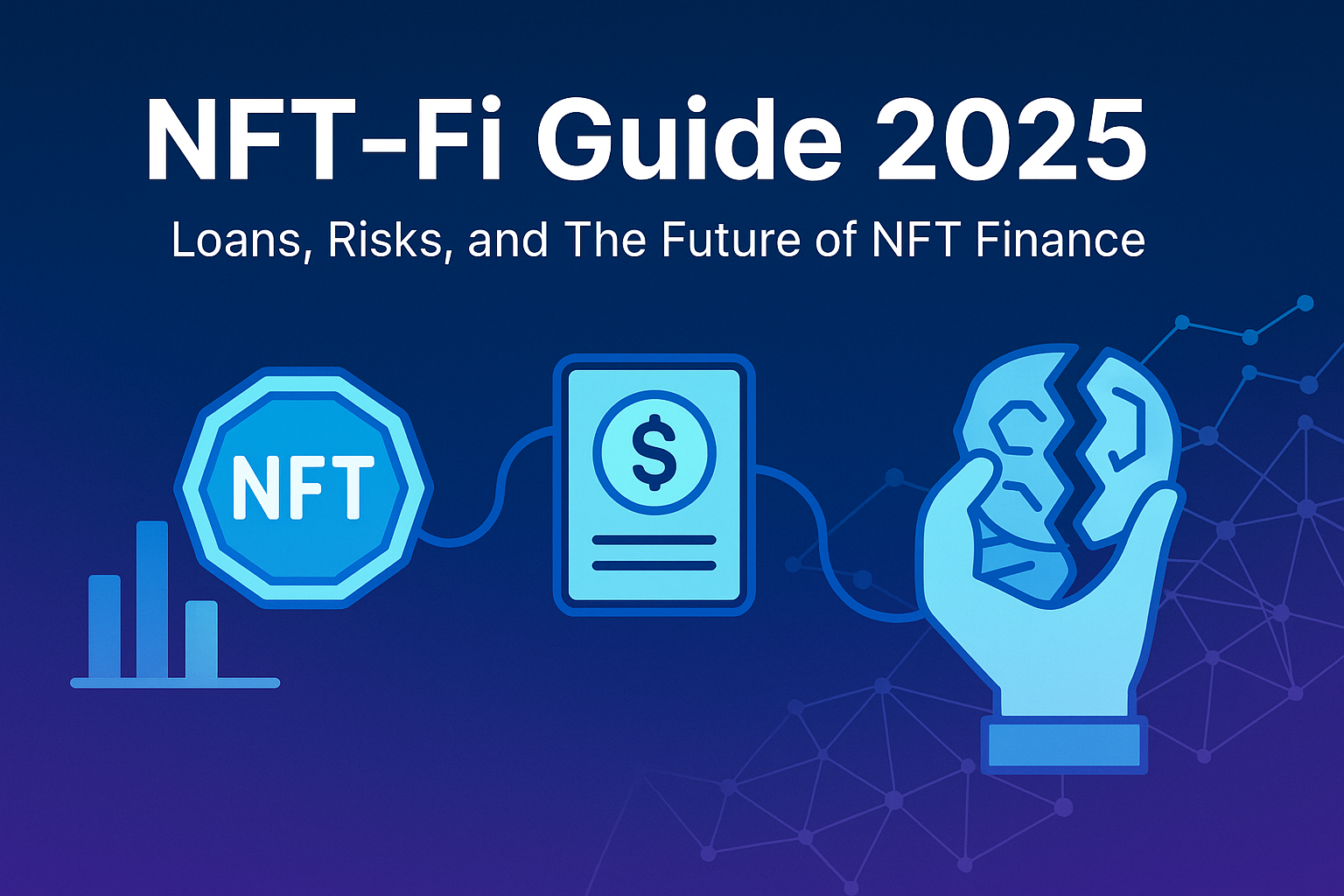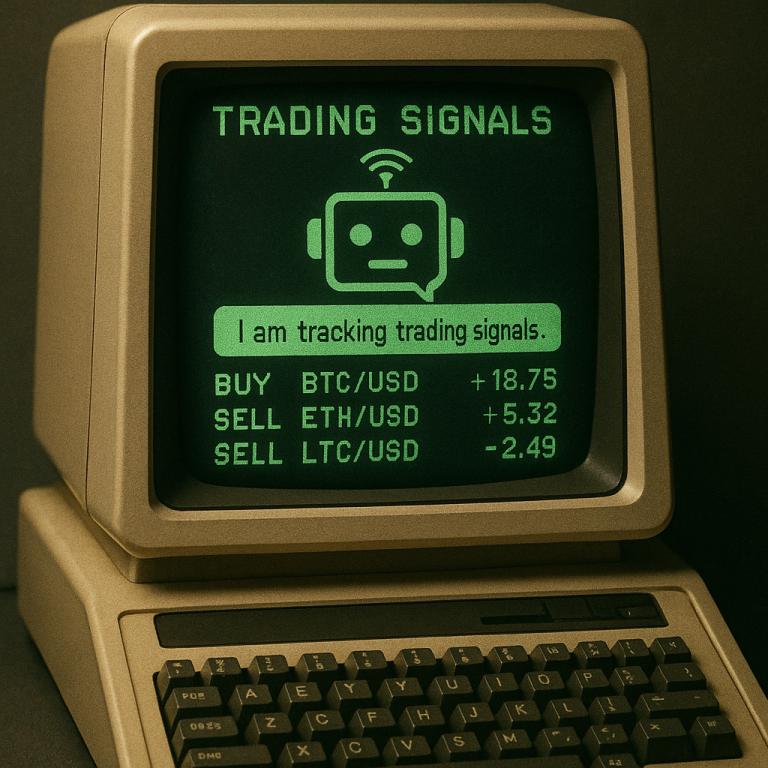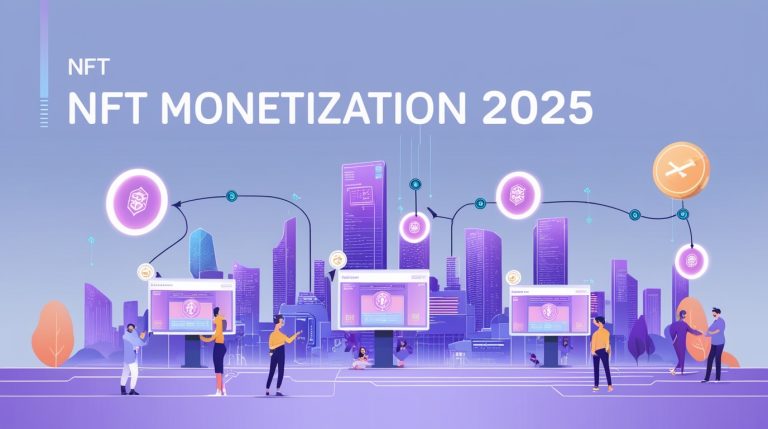NFT-Fi in 2025: How NFTs Became Financial Instruments
NFT-Fi in 2025: How NFTs Became Financial Instruments
NFT-Fi 2025 is more than a trend — it’s a foundational shift in how digital assets are used for lending, liquidity, and investment. NFT-Fi is rapidly transforming the Web3 landscape, turning static collectibles into financial tools. What started as JPEG speculation now powers loans, liquidity, and ownership innovation. In this article, we explore how NFT-backed finance works in 2025 — and why it might become the next major pillar of DeFi.
1. NFT-Backed Loans: Borrowing with JPEGs
Platforms like NFTfi and Arcade.xyz let users stake their high-value NFTs as collateral in exchange for stablecoin loans. Borrowers get liquidity without selling, while lenders earn interest or acquire the NFT if the loan isn’t repaid.
Loan-to-value (LTV) ratios vary — blue-chip NFTs like CryptoPunks or Bored Apes get up to 50% of their floor price. If the borrower defaults, the NFT goes to the lender. This model creates liquidity but comes with risk: NFT prices are volatile, and liquidation is irreversible.
2. Fractional NFTs: Shared Ownership of Icons

Not everyone can afford a $200,000 punk. That’s where fractionalization comes in. Protocols like Tessera or Fractional.art allow users to split NFTs into tradable ERC-20 tokens.
This means you can own 0.01% of a rare NFT and still trade or earn from it. It also enables communities or DAOs to co-own valuable assets, with transparent governance.
But fractional NFTs raise questions about royalties, decision-making, and resale value. If everyone owns a piece, who gets to decide what happens to the whole?
3. NFT Liquidity Pools: Trading Without Waiting
Platforms like Sudoswap, Blur, and experimental NFT pools in Uniswap V3 allow instant NFT swaps.
Instead of waiting for a buyer, you sell into a bonding curve — an automated pricing model that balances supply and demand. This makes the NFT market more dynamic and less reliant on bids.
Some traders now provide liquidity to these pools, earning fees like AMMs in DeFi. It’s NFT meets DEX.
### Why NFT-Fi 2025 Is a Game-Changer for Digital Assets
NFT-Fi is reshaping how we use and value digital assets. By merging DeFi principles with NFTs, users gain access to instant liquidity, transparent lending markets, and programmable ownership. Whether through NFT-backed loans, fractionalization, or dynamic pricing via bonding curves, 2025 marks a shift from static collectibles to financial instruments powering the Web3 economy.
4. RWA-Backed NFTs: Beyond Digital Art
The frontier of NFT-Fi isn’t just digital. Real-world assets (RWA) are entering the space via tokenized property, luxury assets, and even car titles.
Projects like RealT and Propy tokenize ownership of physical real estate into NFTs, which can be rented, fractioned, or collateralized.
We also see the rise of rentable NFTs (via ReNFT) and IP-backed NFTs that generate royalty streams — like music NFTs from Royal.
⚠️ NFT-Fi Risks: Volatility, Scams, and Legal Gray Zones

- Price Volatility: In 2023, Bored Ape Yacht Club floor price dropped from 85 ETH to 25 ETH (–70%) in just 3 months. Collateralized NFTs rapidly lost value, triggering liquidations.
- Fraud & Fakes: Fake fractional tokens and scam lending offers are on the rise — especially on P2P platforms.
- Regulatory Uncertainty: It’s still unclear whether NFT-backed loans are securities. The SEC vs. LBRY case set a precedent for digital assets classification.
- Smart Contract Risks: In 2024, a security flaw on Fractional.art led to unauthorized token movement. Not all DeFi code is audited or battle-tested.
📖 Key NFT-Fi Terms Explained
- LTV (Loan-to-Value): The ratio of loan size to NFT value (e.g. 50% LTV on a CryptoPunk).
- Bonding Curve: A price function used in NFT liquidity pools. The more NFTs sold, the lower the price (or vice versa).
- Synthetic NFTs: Derivative contracts based on NFT prices — similar to futures or options.
- Fractionalization: Splitting a single NFT into many ERC-20 tokens for shared ownership.
- Floor Price: The minimum listed price of an NFT from a particular collection.
📊 NFT-Fi Market Overview (2023–2025)
Data based on Dune Analytics and protocol reports
- 2023: $80M total value locked (TVL) in NFT-Fi protocols
- 2024: $220M across lending, fractionalization, and AMMs
- 2025 Q1: Surpassed $470M — 4x growth in 2 years
🔍 NFT Loan Platform Comparison
| Platform | Max LTV | Loan Duration | Fees | Notes |
|---|---|---|---|---|
| NFTfi | 50% | 7–90 days | 5% | P2P lending, escrow-based |
| Arcade | 60% | 30–180 days | 2–4% | DAO integration, LP-backed |
| Drops DAO | 40% | Flexible | 1% | Combines NFT + token collateral |
| BendDAO | 70% | Instant | 0.1% | Auto-liquidation + real-time pricing |
🧪 Real Cases: Win & Loss in NFT-Fi
✅ Success – PleasrDAO & Doge NFT:
PleasrDAO purchased the famous “Doge” NFT, fractionalized it via Fractional.art, and raised over $4 million in DOG tokens from thousands of co-owners.
❌ Failure – Auto-Liquidation on NFTfi:
A user borrowed 10 ETH against a Doodle NFT. When the floor price dropped to 6.8 ETH, the loan defaulted, and the NFT was permanently transferred to the lender.
What happens if my NFT’s value drops below the loan amount?
Protocols like Arcade allow a 24–48 hour grace period to top up collateral. If no action is taken, the NFT is liquidated automatically.
Are fractional NFTs considered securities?
In the U.S., the SEC has not issued definitive guidance. Projects like Tessera and PartyDAO work with legal advisors to remain compliant.
5. What’s Next: Programmable Capital
The future of NFT-Fi includes:
- Cross-chain collateral lending (ETH NFT, borrow on Solana)
- Decentralized NFT credit scoring
- Index funds of NFT categories
- DAOs that offer pooled credit
But regulation lags behind. NFTs as collateral or securities fall under evolving scrutiny — expect more clarity (and friction) in coming years.

FAQ: NFT-Fi and NFT Finance in 2025
What is NFT-Fi?
NFT-Fi (NFT Finance) is the use of NFTs as financial instruments — including loans, fractional ownership, staking, and liquidity pools. It connects NFTs to the DeFi ecosystem.
Can I get a loan using my NFT?
Yes. You can use high-value NFTs as collateral on platforms like NFTfi or Arcade to borrow stablecoins. If you don’t repay, the NFT may be liquidated.
What are fractionalized NFTs?
Fractional NFTs split ownership into ERC-20 tokens, letting multiple people co-own and trade portions of a single asset.
How do NFT liquidity pools work?
NFTs can be swapped instantly using bonding curves. You sell directly into a pool rather than waiting for a buyer. This makes NFT markets more efficient.
Are real-world NFTs part of this?
Yes. RWA-backed NFTs like tokenized houses or music royalties are expanding the use of NFTs beyond digital art into finance and IP ownership.
Conclusion: The Financialization of Culture
NFT-Fi is no longer theory — it’s infrastructure. By turning JPEGs into collateral, assets, and streams of yield, we’re watching the emergence of programmable capital rooted in culture.
📌 Want more tools, guides, and real Web3 use cases?
Follow @VisualchemyAI and visit CryptoNav.com for daily insights.+
This section highlights key questions about NFT-Fi in 2025: lending protocols, risks, and DeFi integrations you shouldn’t miss.
🚀 Connect With Us:

📬 Stay Updated on Web3 Careers
Join our newsletter to get weekly tips, job openings, and tools for Web3 professionals.
💸 Start Earning with CryptoNav
Explore top crypto platforms, claim welcome bonuses, and support our work through affiliate links:






